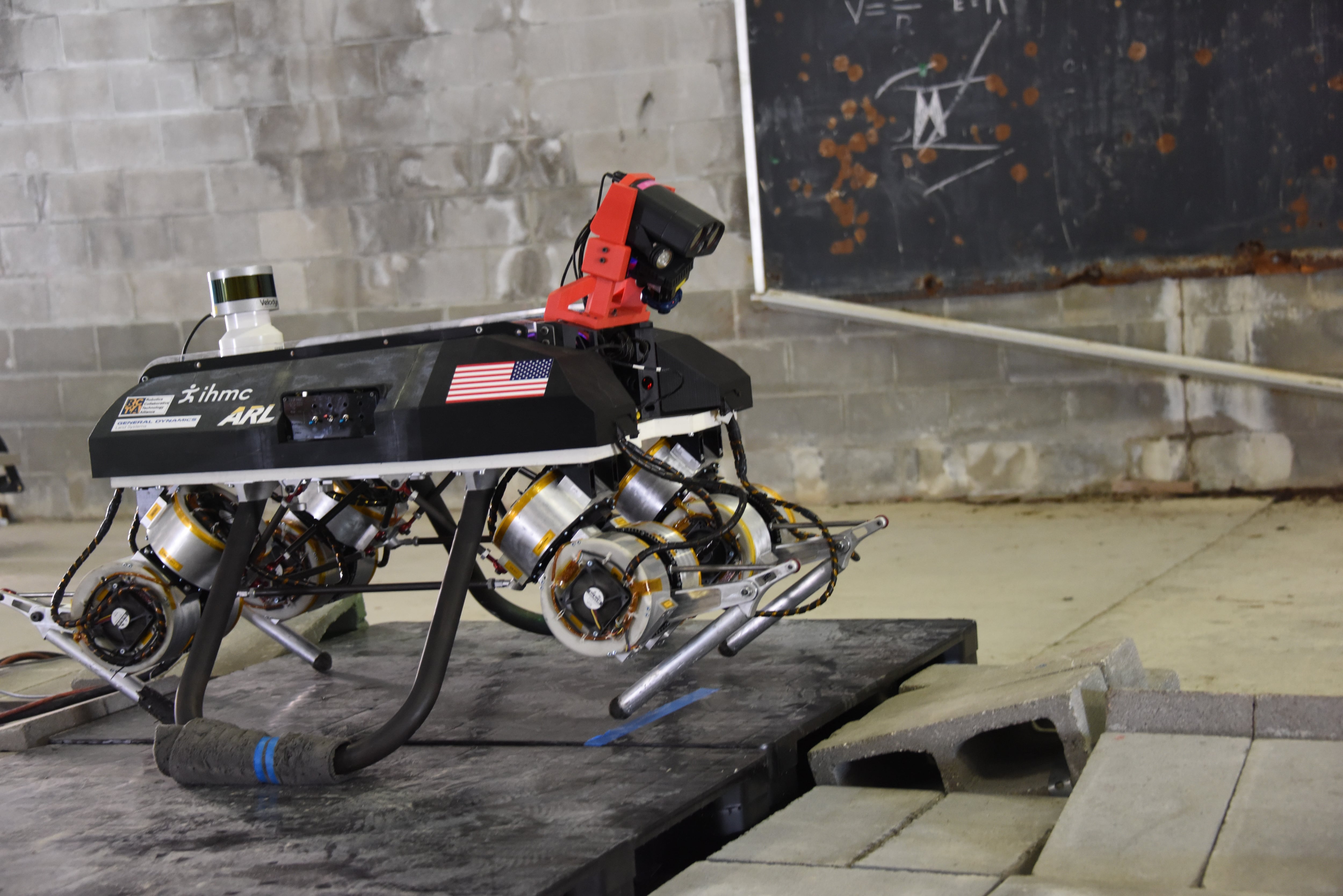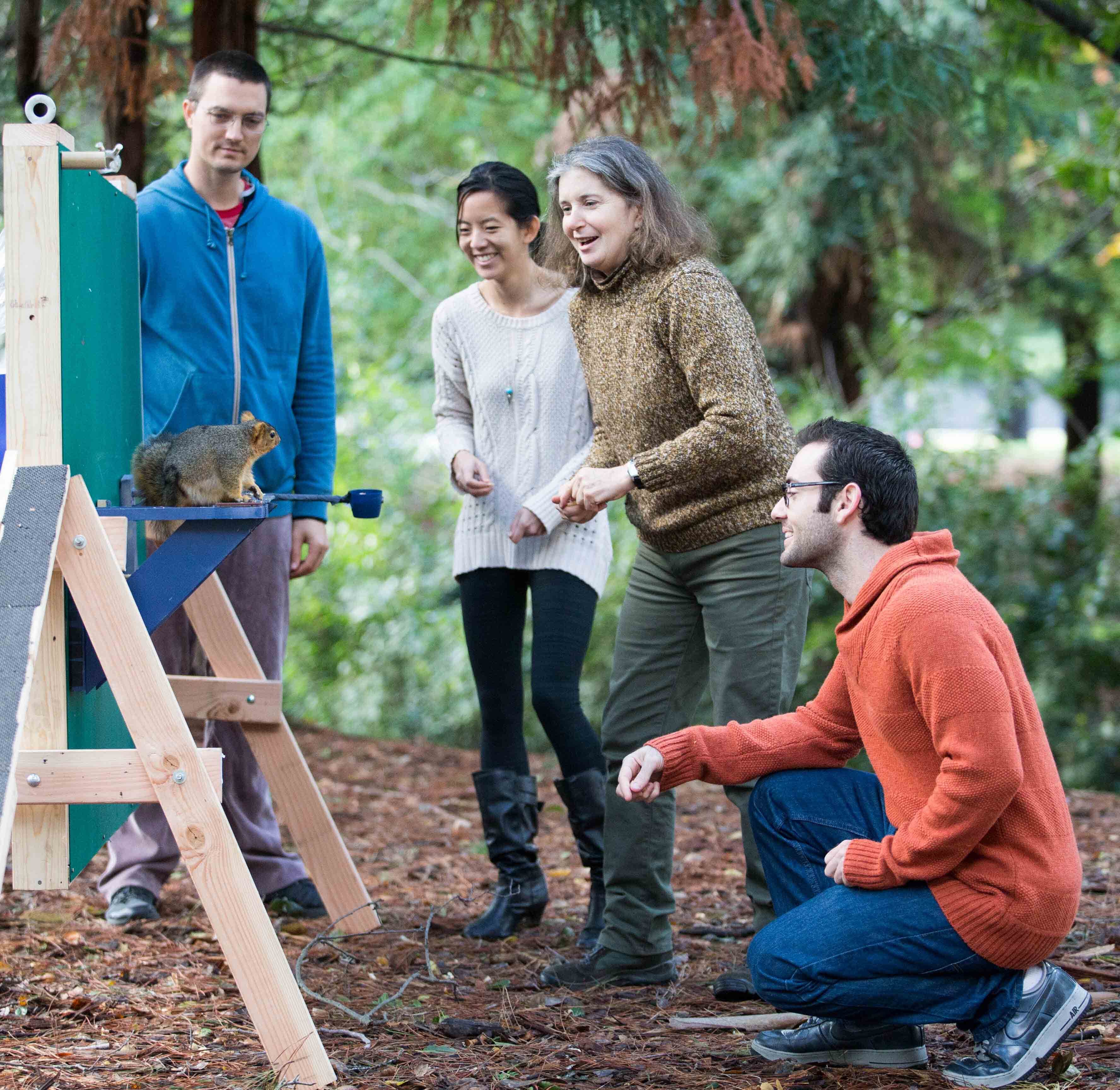Those twitchy jumping squirrels that spring from branch to branch near homes, parks and on tree-filled college campuses could hold a key to building military robots capable of similar acrobatics.
Army-funded research has scientists examining all the intricacies of how squirrels leap from branch to branch to…wherever they land, in an effort to find ways to translate that bouncy behavior to the battlefield of the future.
Dr. Robert Full, professor at the University of California, Berkeley and Dr. Nathanial Hunt, assistant professor of biomechanics at the University of Nebraska, Omaha, are working with Dr. Lucia Jacobs, a professor of psychology and former UC Berkeley doctoral student Judy Jinn to study cognition in wild campus squirrels and tie that with studies of biomechanics.
Their work was published in the August issue of the journal Science, with the subheading “Squirrel parkour.”
RELATED

Parkour is a street-level acrobatic movement discipline in which participants move their bodies in dynamic ways on, over, around and through obstacles.
On some less straight-forward jumps, squirrels would adjust mid-jump and push off nearby surfaces, like a squirrel version of human parkour.
The work is key to a military audience because most robots of today do their work in a confined space and perform limited, repeatable tasks, Dr. Dean Culver, program manager for Complex Dynamics and Systems program at Army Research Office told Army Times.
Think assembly line robots putting together pieces of a car.
There’s more advanced stuff going on with human-looking robots climbing objects, jumping on and off of boxes. However, that’s limiting, too, it’s only trying to build human capabilities-based robots.
But current and future combat zones will be replete with obstacles of all kinds, from standard urban areas to debris or intentional obstacles and emplacements to hinder robots from moving around the terrain.
“We’re going to be putting robots in situations that they’ve never seen before,” Culver said.

Researchers noticed the dexterity of squirrels in all corners of the Berkeley campus. That triggered some research questions about just how they move through the world.
Culver applauded the approach of looking to the natural world for a robot solution.
“It takes a kind of curious mind to look at those questions or situations that most of us take for granted and recognize hey there’s actually some scientific result here that can be really useful for the development of engineered systems in the future,” Culver said.
Even organisms as “simple” as worms require a great deal of research to understand how they function. More complex animals such as squirrels, dogs, or other mammals are vastly more complex, he said.
Could jumping like a squirrel help?
Humans can’t jump like squirrels. If developers want robots that can do things humans can’t, they might look to the natural world.
“As a model organism to understand the biological limits of balance and agility, I would argue that squirrels are second to none,” Hunt said.
By understanding how squirrels do the leaping that they do, Hunt said scientists may, “discover general principles of high-performance locomotion in the canopy and other complex terrains,” that could work in a variety of settings.
“By studying controlling and actuating behaviors going on in the squirrels brain, limbs, trunk we can design robots with similar versatility,” Culver said.
To do this work, researchers attracted wild fox squirrels that ramble through a eucalyptus grove on the Berkeley campus.
They put them “into sketchy situations where they had to decide whether to leap for a peanut or let it go,” according to the release.
Squirrels automatically adjusted how cautious they were when leaping based on how flimsy or compliant the branch was where they had to leap.
But the animals adjusted as they went, and were successful, regardless of the branch after only a few tries.
Even if they misjudged, the squirrel’s sharp claws kept them from falling.
Their claws were so effective, that not one of the squirrels ever fell, despite unsteady leaps and overshot or undershot landings, Hunt said.
“They have redundancy. So, if they miss, they don’t hit their center of mass right on the landing perch, they’re amazing at being able to grab onto it,” Hunt said. “They’ll swing underneath, they’ll swing over the top. They just don’t fall.”
The squirrels could also adjust for speed, compensating in their landing if they came in too fast or slow.
All of the observations and testing feed into ways in which scientists can understand how the squirrel engages its brain, muscles, nervous system, skeletal system and more to accomplish the feats.
Breaking down those individual components and seeing how they work together opens up ways to understand how to build a system that could do the same kind of movements and adjustments, Culver said.
The team has much work to do to advance their understanding, Culver added.
But the work on the squirrels can dive into five pillars of understanding biomechanics — controllers, actuators, sensors, structure and energy management.
Together they combine to create complex movement.
This is not the only animal movement study that could apply to the field. Culver is confident that the research could yield animal-like movement in robots outside of the laboratory in the next 20 years.
Correction: This article has been updated to use the correct spelling of Berkeley.
Todd South has written about crime, courts, government and the military for multiple publications since 2004 and was named a 2014 Pulitzer finalist for a co-written project on witness intimidation. Todd is a Marine veteran of the Iraq War.





